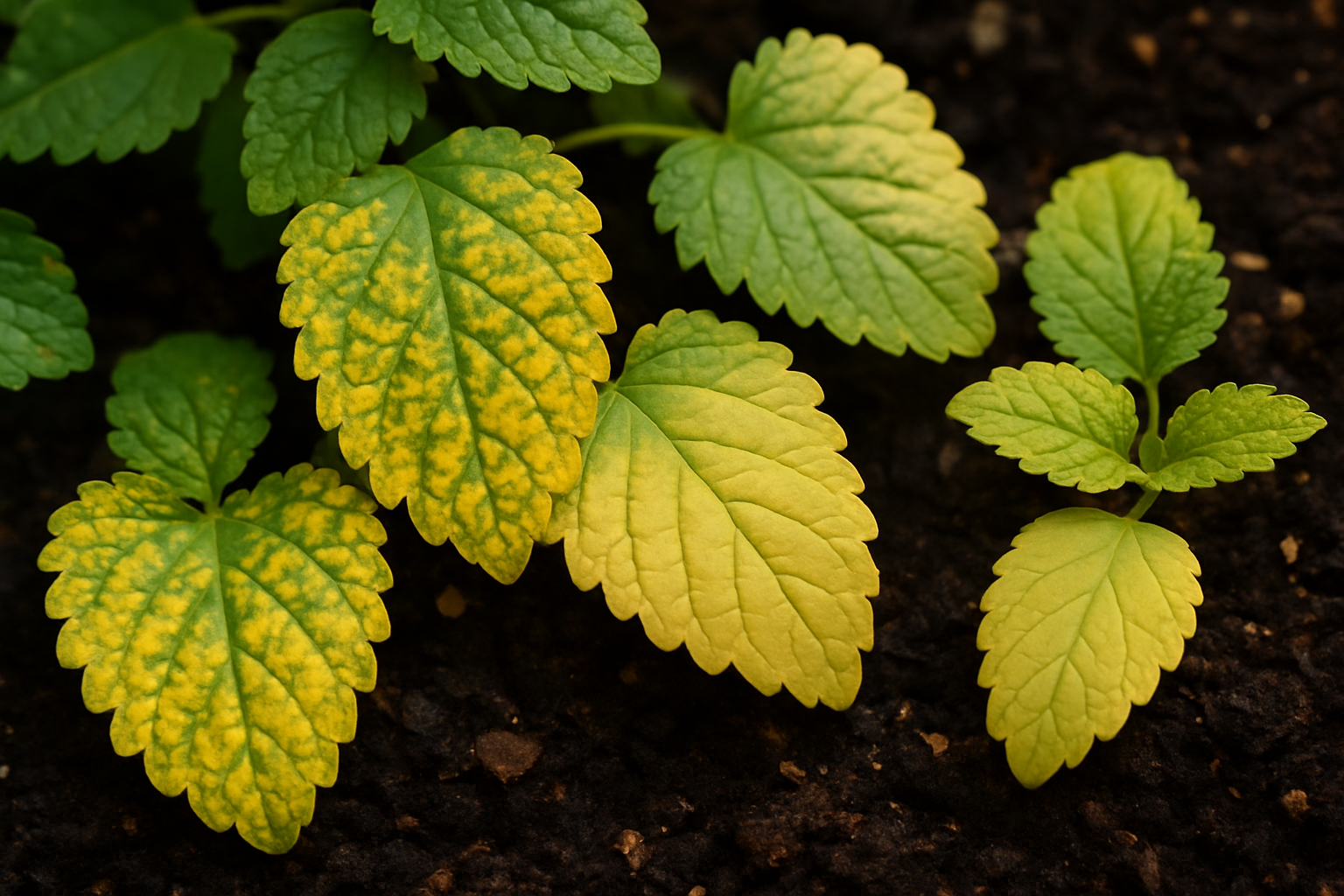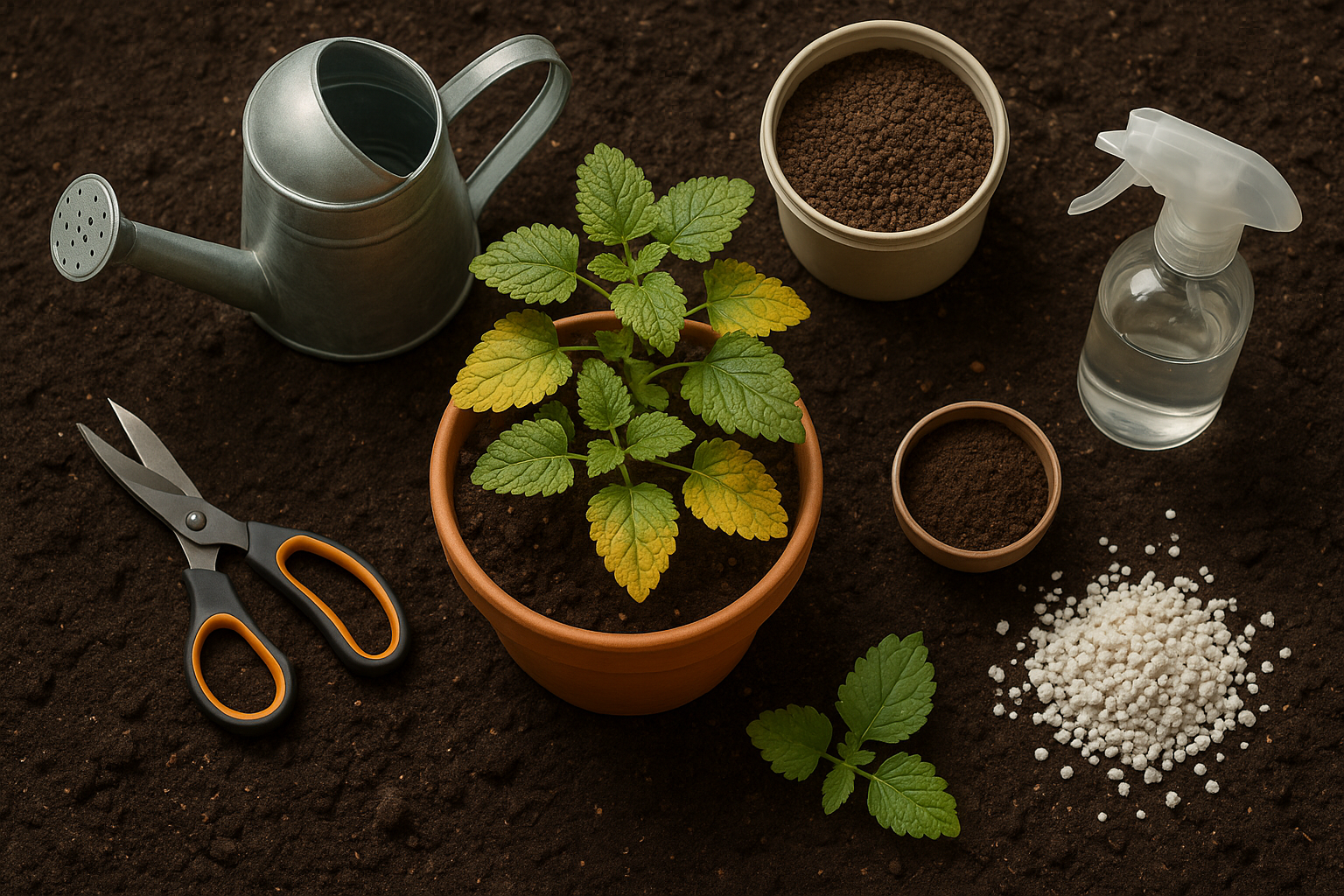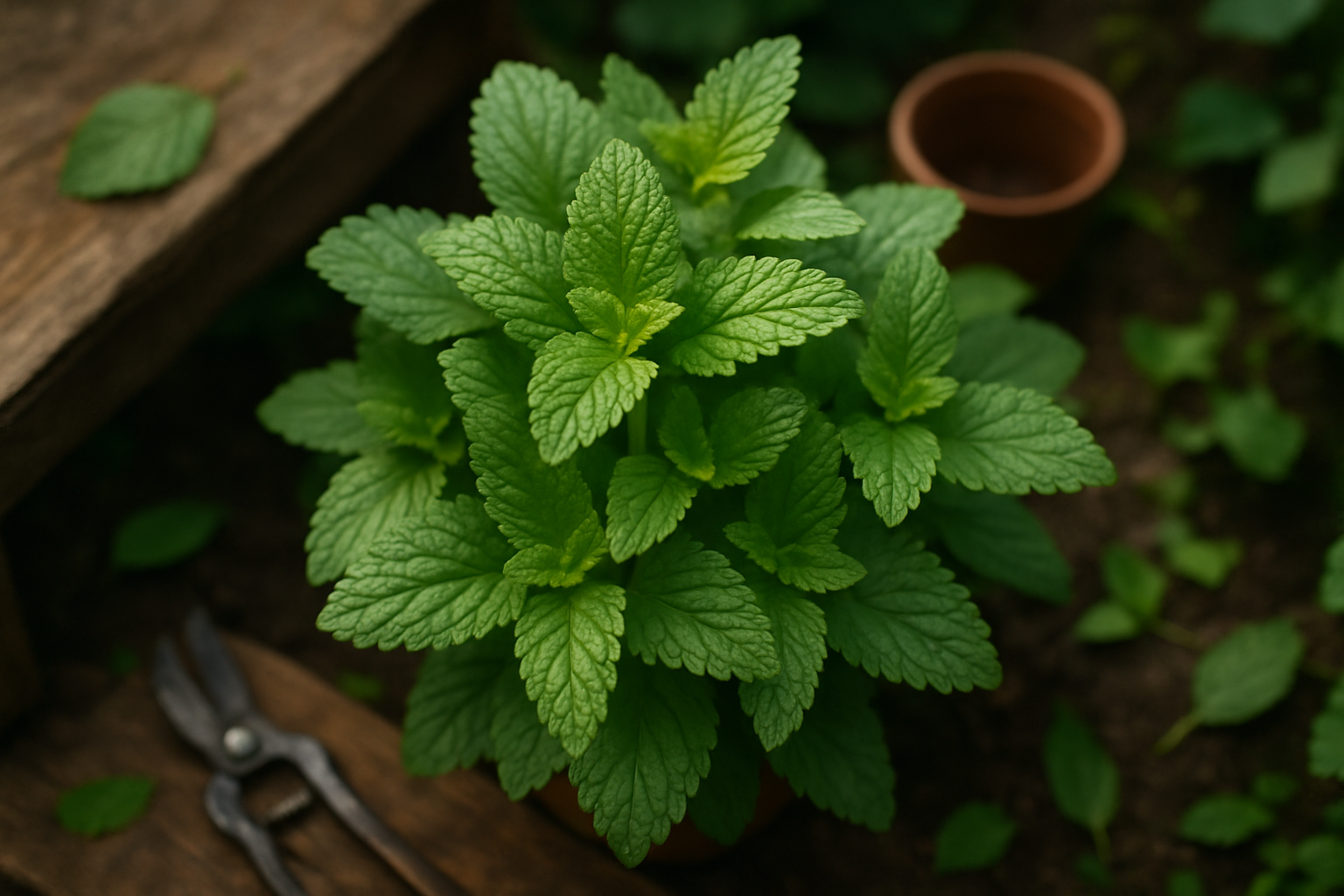Common Signs of Yellowing Lemon Balm Leaves

Yellowing lemon balm leaves can appear in several noticeable ways, making it easier to identify trouble before it spreads. The most common symptom is the development of small yellow spots, especially on older leaves, which may gradually merge into larger patches as the condition worsens.
Sometimes, you might see an overall pale or yellow shade covering entire leaves rather than just the edges. This yellowing often starts from the lower parts of the plant and moves upward. Complete leaf discoloration may be accompanied by premature leaf drop, a key warning sign that the plant is stressed and struggling to thrive.
It’s important to distinguish yellowing from other leaf problems:
- Browning usually signals overexposure to sunlight or underwatering.
- Leaf curling might be caused by pest infestations or sudden temperature changes.
- Yellow leaves, on the other hand, are often linked to overwatering, poor drainage, nutrient deficiencies, or root problems.
Early identification of yellowing is crucial because catching the signs quickly gives you a much better chance of restoring your lemon balm’s health. This might mean adjusting watering routines, boosting soil nutrition, or improving airflow around the plant.
For example, gardeners who spot yellow patches early can prune affected leaves, assess their watering habits, or repot in better-draining soil—actions that vastly improve the herb’s chance of a quick recovery. Noticing the difference between yellowing and other issues helps you act fast and tailor your response, ensuring your lemon balm stays lush and aromatic.
Top Causes Behind Lemon Balm Turning Yellow
Lemon balm turning yellow can be unsettling, but pinpointing the cause will help your plant get back on track quickly. One of the most common reasons is improper watering—both over-watering and under-watering can stress your lemon balm.
Over-watering suffocates the roots, making them prone to rotting, while under-watering causes wilting and disrupts nutrient transport, both leading to yellow leaves. Poor soil drainage worsens these problems because waterlogged soil keeps roots wet for too long. When roots sit in soggy soil, they’re more likely to develop root rot, which blocks the vital flow of water and nutrients.
Another major factor is nutrient deficiency. If your lemon balm isn’t getting enough nitrogen, the leaves can turn uniformly pale yellow. Magnesium deficiency often causes yellowing between the leaf veins. Regularly feeding your plant with a balanced, organic fertilizer or adding compost can help solve these issues.
Environmental Stresses
Environmental factors like too much or too little light also play a role. Lemon balm prefers partial shade to full sun, and sudden changes—such as a cold snap or a heat spike—can trigger yellowing as the plant struggles to adapt. Low humidity or gusty winds may further dry out leaves, worsening the yellowing.
Pests and Diseases
Lastly, pests such as aphids or spider mites can weaken the plant by sucking its sap, and fungal diseases like powdery mildew can interfere with normal leaf function. Check your plants for signs of insects or spots, and treat them early with insecticidal soap or by improving airflow.
By paying attention to these factors—watering habits, soil quality, nutrients, and environmental conditions—you can help your lemon balm grow lush and green.
How To Fix Yellowing Lemon Balm

Yellowing lemon balm leaves usually indicate that something’s off with your plant’s care routine, but you can often restore them to health with a few targeted fixes. Start by checking your watering habits; lemon balm likes moist but not soggy soil, so water only when the top inch feels dry to the touch.
If water tends to pool or the soil stays wet, improving drainage is crucial—try mixing in perlite or coarse sand, or repotting in a container with good drain holes.
Next, evaluate the soil quality. Lemon balm prefers slightly rich soil, so add compost or a slow-release organic fertilizer to fix any nutrient deficiencies, especially nitrogen, which is vital for lush, green growth.
If you notice yellowing along with mushy stems or a musty odor, root rot or fungal issues may be the cause. Remove affected parts with sterilized scissors and treat the healthy plant with a gentle neem oil spray to fight pathogens and pests.
For persistent fungal infections, sprinkle a light layer of cinnamon on the soil surface—it acts as a natural fungicide.
Also, watch out for aphids and spider mites, which can cause yellow leaves. A strong spray of water can dislodge small pests, and insecticidal soap is safe for tougher infestations. Avoid harsh chemicals and always inspect new plants before adding them to your garden.
With a little care and attention, your lemon balm can bounce back to vibrant health.
Preventing Yellow Leaves in the Future
Preventing yellow leaves on your plants starts with building healthy habits, especially around watering and soil care. Water your plants consistently, but don’t stick to a rigid schedule—instead, check the soil moisture with your finger and only water when the top inch feels dry. Overwatering is just as risky as underwatering, so always ensure your pots or beds have reliable drainage holes and never let roots sit in soggy soil.
Regular soil testing is a game-changer; a simple testing kit from a garden center can help you monitor pH and nutrient levels. This way, you can add a balanced fertilizer that meets your plants’ needs without overdoing it.
Keep an eye on environmental factors, too. Make sure plants get the right amount of sunlight for their type, maintain a steady temperature (generally between 65–75°F for many popular houseplants), and support good airflow by spacing plants well and occasionally rotating them.
Most importantly, conduct quick weekly inspections for early signs of yellowing or distress. Catching problems early lets you act fast and protect your plant’s health before small issues spread. Consistent attention to these basics will keep your greens thriving and keep yellow leaves at bay.
Extra Tips for Healthy, Vibrant Lemon Balm
To keep your lemon balm thriving, start with regular pruning—snipping back stems encourages fuller, bushier growth and prevents the plant from becoming leggy or overcrowded. Aim to prune every few weeks during the growing season, especially before it flowers, to maintain optimal flavor and vigor.
Proper spacing is also key; lemon balm spreads easily, so plant each one 18–24 inches apart. This allows for good air circulation and reduces the risk of mold or mildew.
Don’t forget about companion planting—lemon balm does especially well near tomatoes and squash, both of which benefit from its natural pest-repelling qualities. On the other hand, avoid placing it too close to other members of the mint family unless you want a fragrant tangle!
When harvesting, pick leaves in the morning after the dew dries but before the intense sun hits, choosing only the top, healthiest sprigs for the best flavor. Healthy lemon balm has lush, green, lightly serrated leaves and a fresh, lemony scent.
If your plant looks pale, sparse, or wilted, it might need more sun or slightly moist—not soggy—soil. With just a little extra attention, your lemon balm will reward you with vigorous growth and abundant leaves all season long.
